
Light pollution is the presence of any unwanted, inappropriate, or excessive artificial lighting. In a descriptive sense, the term light pollution refers to the effects of any poorly implemented lighting sources, during the day or night. Light pollution can be understood not only as a phenomenon resulting from a specific source or kind of pollution, but also as a contributor to the wider, collective impact of various sources of pollution.

Lighting or illumination is the deliberate use of light to achieve practical or aesthetic effects. Lighting includes the use of both artificial light sources like lamps and light fixtures, as well as natural illumination by capturing daylight. Daylighting is sometimes used as the main source of light during daytime in buildings. This can save energy in place of using artificial lighting, which represents a major component of energy consumption in buildings. Proper lighting can enhance task performance, improve the appearance of an area, or have positive psychological effects on occupants.
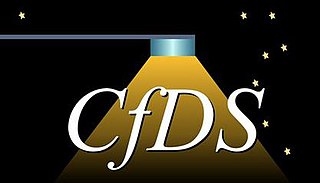
The Commission for Dark Skies (CfDS) is the United Kingdom's largest anti-light-pollution campaign group forming part of the international dark-sky movement.

Skyglow is the diffuse luminance of the night sky, apart from discrete light sources such as the Moon and visible individual stars. It is a commonly noticed aspect of light pollution. While usually referring to luminance arising from artificial lighting, skyglow may also involve any scattered light seen at night, including natural ones like starlight, zodiacal light, and airglow.

A sodium-vapor lamp is a gas-discharge lamp that uses sodium in an excited state to produce light at a characteristic wavelength near 589 nm.

The night sky is the nighttime appearance of celestial objects like stars, planets, and the Moon, which are visible in a clear sky between sunset and sunrise, when the Sun is below the horizon.

The history of street lighting in the United States is closely linked to the urbanization of America. Artificial illumination has stimulated commercial activity at night, and has been tied to the country's economic development, including major innovations in transportation, particularly the growth in automobile use. In the two and a half centuries before LED lighting emerged as the new "gold standard", cities and towns across America relied on oil, coal gas, carbon arc, incandescent, and high-intensity gas discharge lamps for street lighting.

DarkSky International, formerly the International Dark-Sky Association (IDA), is a United States–based non-profit organization incorporated in 1988 by founders David Crawford, a professional astronomer, and Tim Hunter, a physician and amateur astronomer. The mission of DarkSky is "to preserve and protect the night time environment and our heritage of dark skies through quality outdoor lighting."
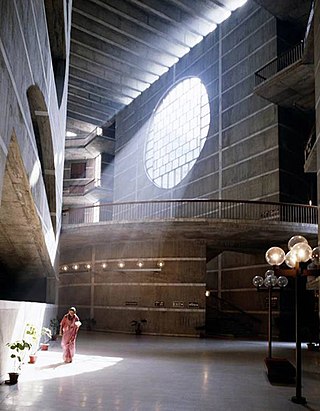
Architectural lighting design is a field of work or study that is concerned with the design of lighting systems within the built environment, both interior and exterior. It can include manipulation and design of both daylight and electric light or both, to serve human needs.
In the field of physical security, security lighting is lighting that intended to deter or detect intrusions or other criminal activity occurring on a property or site. It can also be used to increase a feeling of safety. Lighting is integral to crime prevention through environmental design. A 2019 study in New York City found that the provision of street lights, an important type of security lighting, resulted in a "36 percent reduction in nighttime outdoor index crimes."
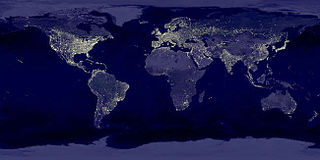
International Dark Sky Week is held during the week of the new moon in April, when people worldwide may turn off their lights to observe the beauty of the night sky without light pollution. This event was founded in 2003 by high school student Jennifer Barlow of Midlothian, Virginia. It has been endorsed by the International Dark-Sky Association, the American Astronomical Society, the Astronomical League, and Sky & Telescope.

A dark-sky preserve (DSP) is an area, usually surrounding a park or observatory, that restricts or reduces light pollution or maintains and protects naturally dark night skies. Different terms have been used to describe these areas as national organizations and governments have worked independently to create programs. DarkSky International (DarkSky) uses "International Dark Sky Reserve" (IDSR) and "International Dark Sky Park" (IDSP) among others when certifying Dark Sky Places.
Scotobiology is the study of biology as directly and specifically affected by darkness, as opposed to photobiology, which describes the biological effects of light.

The Bortle dark-sky scale is a nine-level numeric scale that measures the night sky's brightness of a particular location. It quantifies the astronomical observability of celestial objects and the interference caused by light pollution. Amateur astronomer John E. Bortle created the scale and published it in the February 2001 edition of Sky & Telescope magazine to help skywatchers evaluate the darkness of an observing site, and secondarily, to compare the darkness of observing sites.
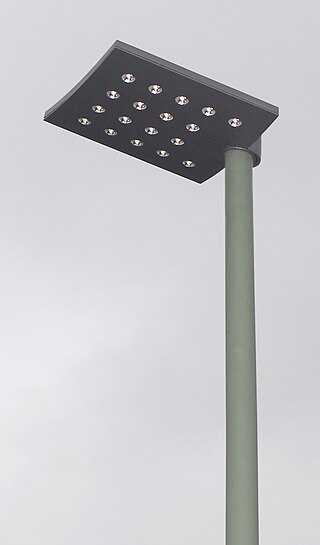
An LED street light or road light is an integrated light-emitting diode (LED) light fixture that is used for street lighting.

Ecological light pollution is the effect of artificial light on individual organisms and on the structure of ecosystems as a whole.

Globe at Night is an international scientific research program that crowdsources measurements of light pollution in the night sky. At set time periods within each year, the project asks people to count the number of stars that they can see from their location and report it to the project's website. The coordinating researchers compile this information to produce a public, freely available map of global light pollution. By September 2011, almost 70,000 measurements had been made. The use of data collected by the public makes the program an example of citizen science. Globe at Night began as a NASA educational program in the US organized by the NOAO, and was expanded internationally during the 2009 International Year of Astronomy; it is an offshoot of the GLOBE Program, which focuses on school-based science education.
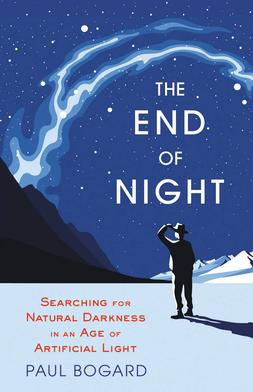
The End of Night: Searching for Natural Darkness in an Age of Artificial Light is a 2013 non-fiction book by Paul Bogard on the gradual disappearance, due to light pollution, of true darkness from the night skies of most people on the planet. Bogard examines the effects of this loss on human physical and mental health, society, and ecosystems, and how it might be mitigated.
The spectral G-Index is a variable that was developed to quantify the amount of short wavelength light in a visible light source relative to its visible emission. The smaller the G-index, the more blue, violet, or ultraviolet light a lamp emits relative to its total output. It is used in order to select outdoor lamps that minimize skyglow and ecological light pollution. The G-index was originally proposed by David Galadí Enríquez, an astrophysicist at Calar Alto Observatory.

Light pollution is the presence of unwanted artificial light that brightens the night sky. Improperly shielded lights are the source of many of the issues regarding the light pollution in Hawai'i. Urban centers in the cities are often so bathed in light that over a hundred kilometers from the city's edge, the light pollution resulting from the glow is present. Fabio Falchi is quoted as stating that “light pollution is one of the most pervasive forms of environmental alteration” due to its destructive nature in both un- and protected areas such as national parks. Dark night skies are an important natural, cultural, scientific, educational, and economic resource for Hawai‘i.

















